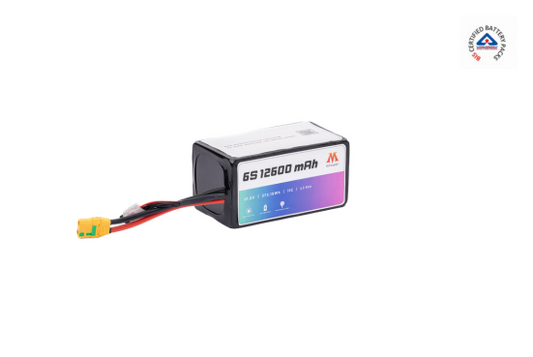
Our earth is covered with 31% of forests. The forest ecosystem is the soul and life of our planet, and it is the only elemental source of air. Ironically, forests have been heavily impaired, and the world's biodiversity area keeps decreasing. It is vital to restore and manage them. Recently, COP 28 was held in the UAE, where world leaders discussed their concerns about climate change.
Forest management can be vital for wildlife protection and mitigating climate challenges. However, there are various challenges in forest management. Thanks to technology! Drones and unmanned Aerial Vehicles become vital tools for forest management. It is still in the experimental stage, holding great potential for the near future. The accessibility of LiDAR and infrared sensors will increase the utilization of drones in forestry. In this blog, we will discuss challenges with forest management, how drones can resolve this, and its various applications.
Significant Challenges in Forest Management
Poaching
Poaching is a constant threat to forest management. It involves the illegal trafficking of trees, hunting of wildlife and more. Due to poaching, countless species have been exploited, leading to an imbalance in biodiversity. For officials, monitoring poaching activity is the biggest challenge.
Invasive Species
It is a real worry that some species might bring a fatal virus that could infiltrate a forest. This scenario is hazardous since invading species can quickly transmit disease across the wildlife, transforming the forest into a dangerous battlefield. Therefore, monitoring animal migration and preventing the spread of insects, illnesses, and invasive plant species is vital. However, officials have to work very hard to achieve this task, especially in expansive forests with lots of foliage and a healthy population of wild animals.
Deforestation
It is one of the biggest challenges with forest management. Tree cutting is rampant in every corner of the world and disrupts the environment's ecosystem, leading to an imbalance in nature. In the process of being developed and urbanized, we have sacrificed our wide range of forest cover.
There has been a continuous decline in the tree population, leading to a loss of biodiversity and a decline in tree population. For officials, keeping the count of trees and planting new trees for them is more challenging.
Forest Fire
Wildfires are natural but have significantly increased in the last two decades due to human activities and climate change. For instance, the 2019–2020 Australian bushfire season impacted 398,000 km2 area, the 2023 Canadian wildfires impacted 165,000 km2 area, and the 2019 Amazon wildfires impacted 9,000 km2. These are very few instances that damage the forests and surroundings. Handling these situations is challenging, and monitoring forest fires is difficult.
Lack of Funding and Resources
The lack of funding for effective forest management faces challenges for many forest management programs. An insufficient workforce also presents another challenge to the operation. Protecting human workers' safety when interacting with wildlife is crucial. These combined issues may hamper attempts at restoration and conservation.
Benefits of Deploying Drone in Forest Management
Forest Fire Detection
New drones are equipped with infrared cameras and sensors that help forest officials detect wildfires in the early stages of wildfire. They can fly over vast areas and detect the potential threat.
Anti-Poaching Surveillance
Forest officials can keep an eye on poachers and hunters with the help of drones. It comes with a thermal camera and other crucial components. Drones can also quickly cover many areas, reducing illegal activity.
Saves Money and Lives
Traditionally, officials use ground-based observations and manned craft to assess the forest's health and growth, which is time-consuming and expensive. Deploying drone technology helps officials cut down on costs in real-time, allowing more coverage to be assessed. Additionally, it reduces the potential unwanted accidents associated with forest protectors.
Wildlife Monitoring
Drones can play a pivotal role in monitoring wildlife. The futuristic drone is equipped with a camera offering high-resolution images. It enables access to animal behavior without disturbing them.
Applications of UAVS in Forestry
Mapping Forests and Biodiversity
Koh and Wich did an experiment utilizing a drone to map Indonesian tropical forests. They employ a small UAV-type aircraft (under 1 kg) with a 25-minute flight time and a 15 km maximum distance per flight. The resulting land cover map had a spatial resolution of 5.1 cm, capturing diverse activities such as logging, wildlife, and flora species. They discovered that drones efficiently saved time, costs, and labor.
Precision Forestry and Sustainable Forest Management
In precision forestry, unmanned aircraft were pivotal in quickly and accurately assessing parameters like canopy cover, tree volume, and biomass. Studies like Mokroš et al. demonstrated using a low-cost quadcopter for wood chip volume estimation, showcasing a 10.4% higher volume than traditional methods and significantly reduced data collection time.
Mapping Canopy Gaps
Mapping canopy gaps, crucial for understanding forest disturbances, became achievable through drone remote sensing. Getzin et al. conducted flights in German forests, accurately identifying gaps down to 1 sqm in size, correlating with biodiversity indicators.
Measuring Forest Canopy Height and Attributes
LiDAR-equipped drones and optical sensors provided cost-effective alternatives for measuring forest canopy height and attributes. Lisein et al. used a small drone with near-infrared images to measure canopy height, comparable to more expensive LiDAR equipment. Dandois and Ellis observed deciduous forest canopy phenology using a hexacopter, showcasing the versatility of drones in capturing forest dynamics.
Role of mPower in Forest Management
Forest management drones are in the experimental stage and hold the immense potential to sustain biodiversity. mPower understands that forest drones require high-power and customized batteries in order to fulfill various demographic requirements. We present a survey drone battery. Our survey drone power solutions come in a wide range, and we also offer customization, revolutionizing drone manufacturing.












